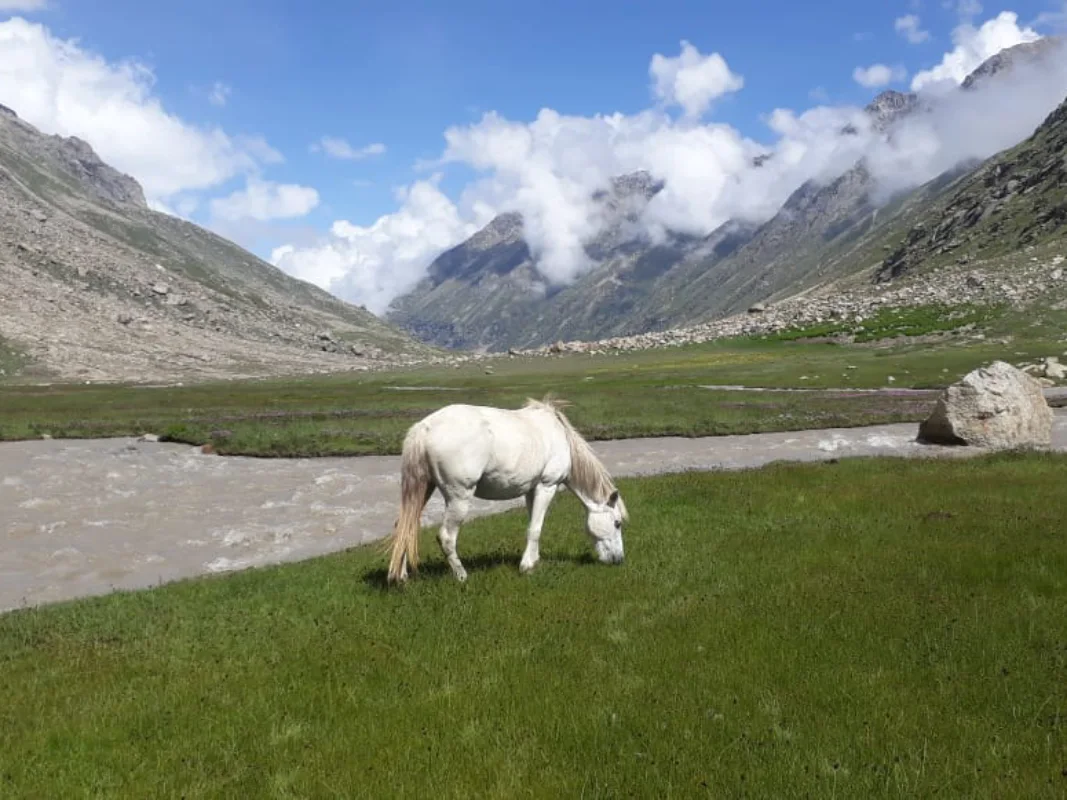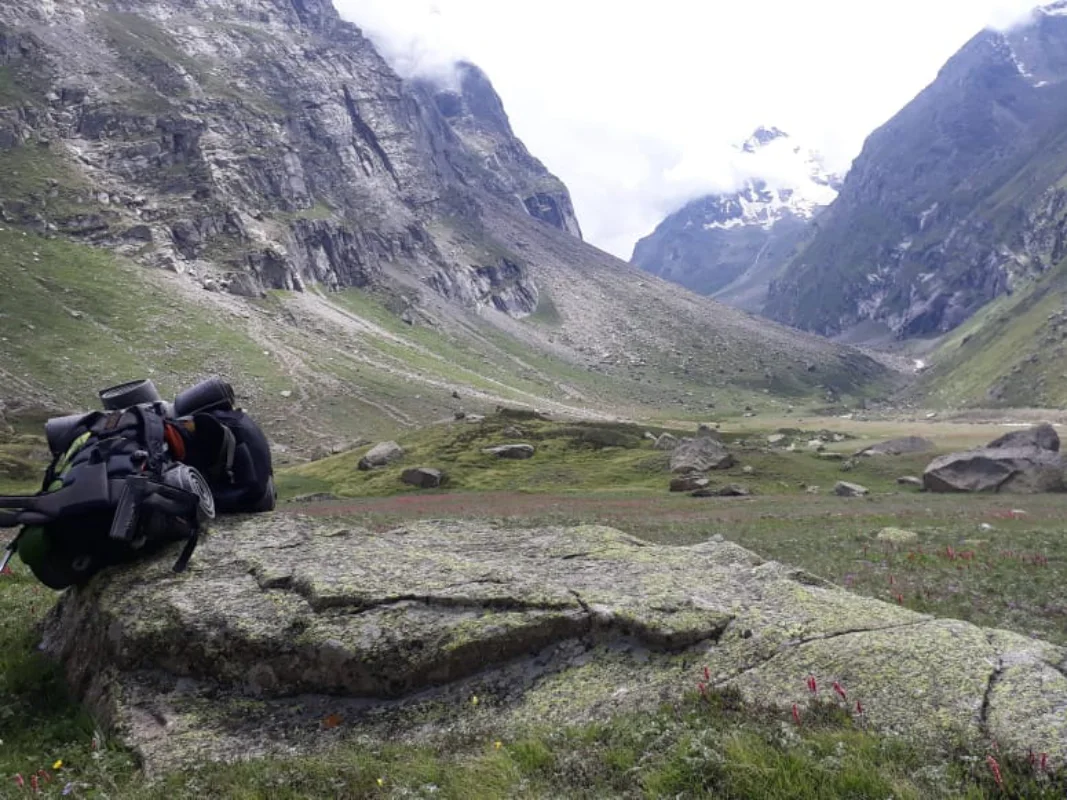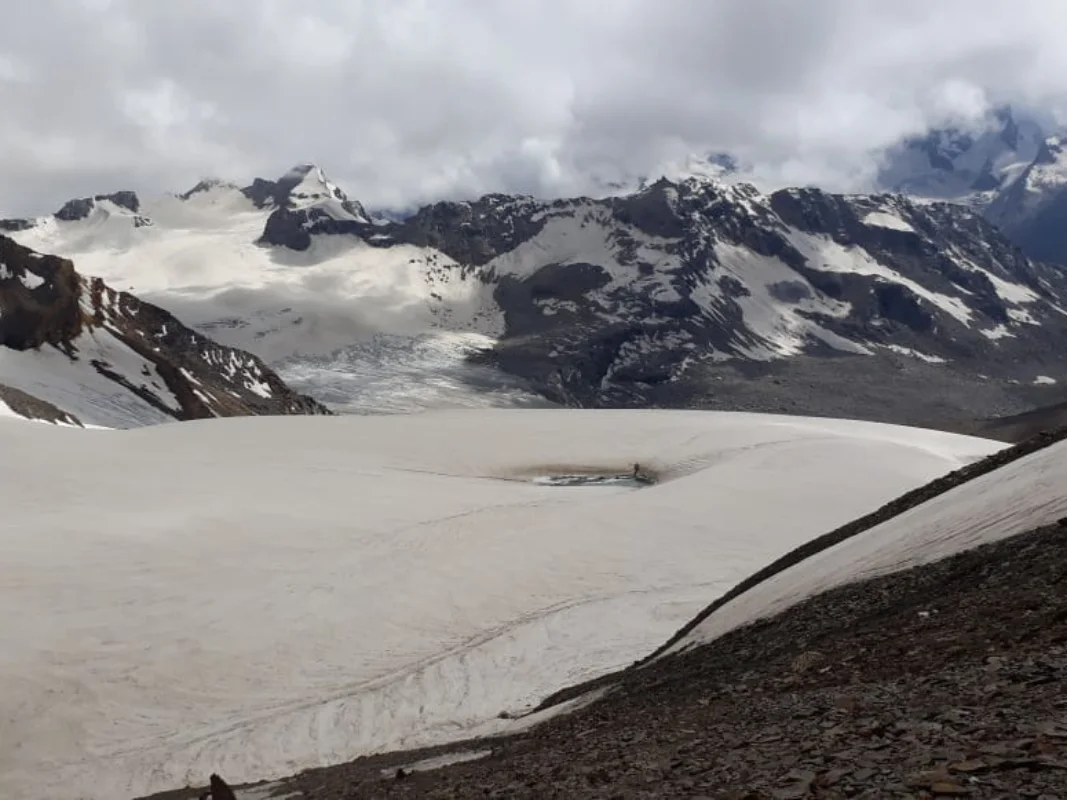Pin Parvati Trek
- 11 Nights 12 Days
- 5319 m
- Hard
- Kullu, Manali, Spiti Valley
Rs 45,000/-
For a seasoned and experienced trekker, the Pin Parvati Trek is going to be a challenge with a thrill. It is going be another peak added to your achievements. This is a long expedition packed with adventure and beauty. Traversing this 17,457 ft pass is going to be an exhilarating once-in-a-lifetime accompanying experience. Your journey to the Pin Parvati Pass with the Traveling Card is going to be an unforgettable memory. In this Pin Parvati Pass Trek, you will have a beautiful experience. The lush green meadows and forests will be accompanying us in the Pin Parvati region. In the Trans-Himalayan Spiti region, you will be awestruck by the beauty of villages and their uniqueness. The change in the terrain of both regions will dazzle you. If you are in love with the raw beauty and mightiness of the Himalayan Mountains, the journey awaits you.
Day 1 - Manali To Pulga
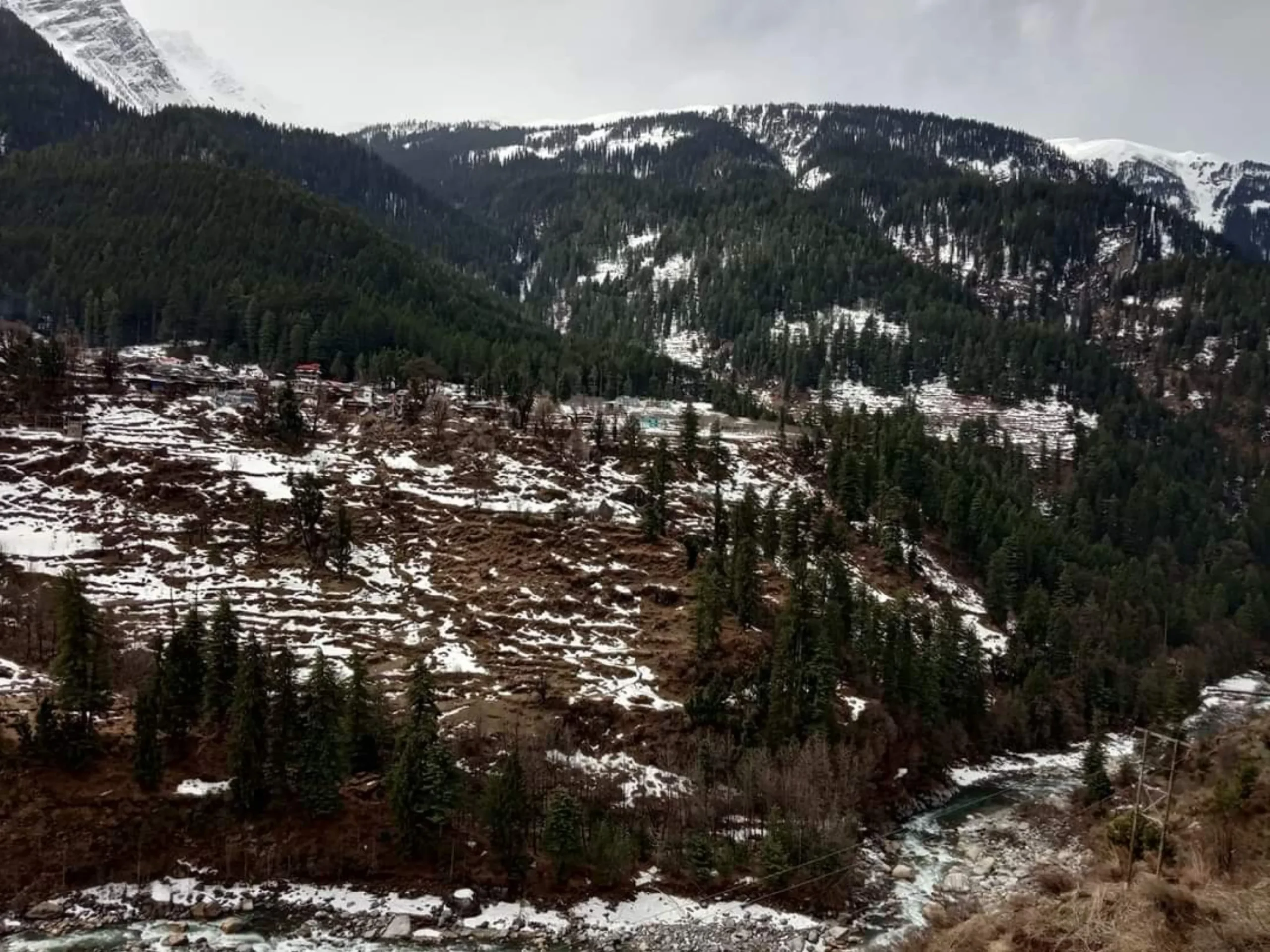
Our Journey begins from Manali. You must be ready with gear for the trek here. We drive from Manali to Barshaini and from here we will walk to the village Pulga (2895 m). This village is a place where every backpacker should come. We stay for the night in Pulga.
Day 2 - Pulga To Kheerganga

From Pulga we start moving towards Kheerganga. Kheerganga is a famous trek in Kullu. Trek to kheerganga goes through meadows and forests. At Kheerganga there are warm water springs where one can soak, relax, and enjoy views of snow capped mountains. People have a belief that Lord Shiva once meditated at Kheer-ganga for about 3000 years. The overnight stay is at Kheerganga in tents.
Day 3 - Kheerganga To Tunda Bhuj

Today we start our trek to Tunda Bhuj. It is going to be a steady climb. We will be trekking through forest cover and meadows. The chirping of various birds on the way is going to make the trek pleasant and enjoya-ble. Night stay will be at the camps.
Day 4 - Tunda Bhuj To Thakur Kuan And Odithach
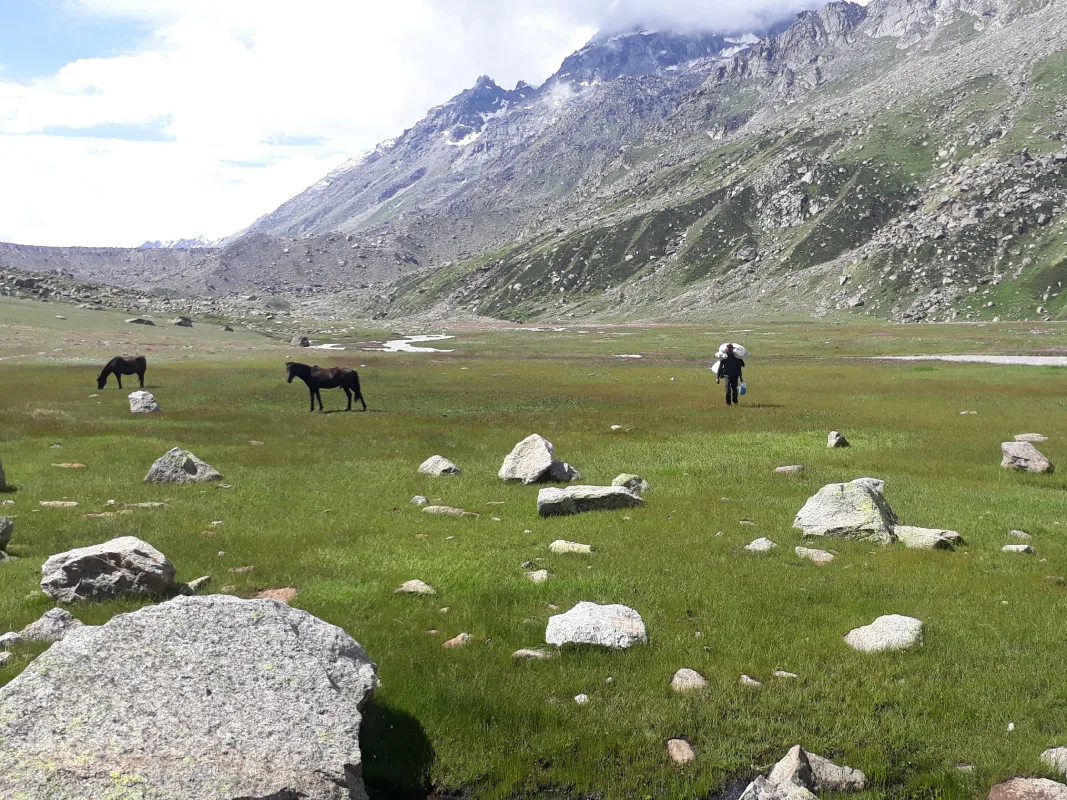
From Tunda Bhuj we start our trek to Thakur Kuan. The trek will be easy but will be time-consuming. So you need to be ready to walk for a long time for this day. As we reach the Thakur Kuan, you will be able to see the ridge of Mantalai Lake. Night stay is at the camps.
Day 5 - Odithach To Mantalai (4100 m)
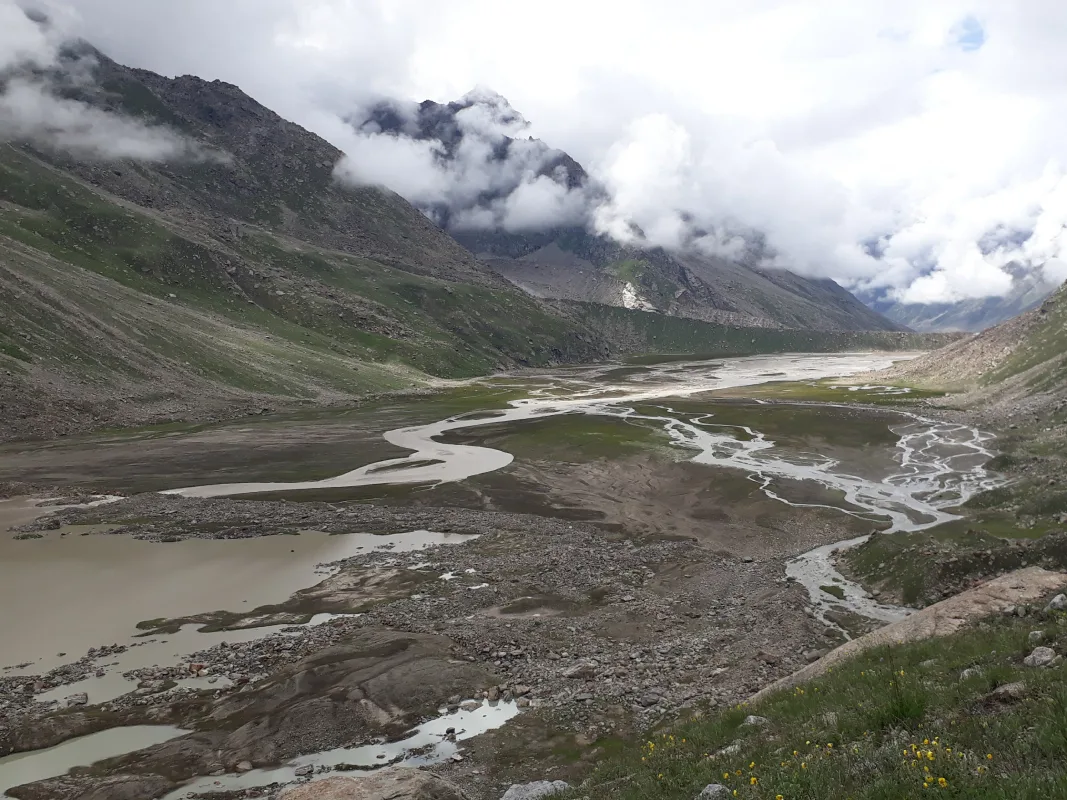
The trek from Odithach to Mantalai is going to be an enjoyable trek as the trail has a level walk. Only in last 300 m you will feel exhausted. On our way we will reach Mini Mantalai. It is the place where we can see the River Parvati in its formation stage. A number of streams are flowing at mini Mantalai over the vast flat lush green expanse. Just a 300 m steep ascent from here takes us to the Mantalai glacial lake. We will pitch our tents here and enjoy the surroundings.
Day 6 - Mantalai To Camp I

Trek to Camp I is going to be a challenge. We will start early from Mantalai. We can expect to see the beau-tiful view of the rising sun. The path we will be taking has loose rocks, thus you must maintain a distance with trekker walking in front. After this the trail is comfortable till we reach the moraine area of 1 km. As we cross this patch we will be reaching the camp I. The camp is near the 300 m glacier. Seeing this in person will make you feel relaxed and you will no more be exhausted. If you are lucky to be here on a full moon, the feeling here would be out of the world.
Day 7 - Acclimatization Day

Today we relax and enjoy the Scenic views. It will also be a way to get you acclimatized for the further trek.
Day 8 - Camp I to Camp II
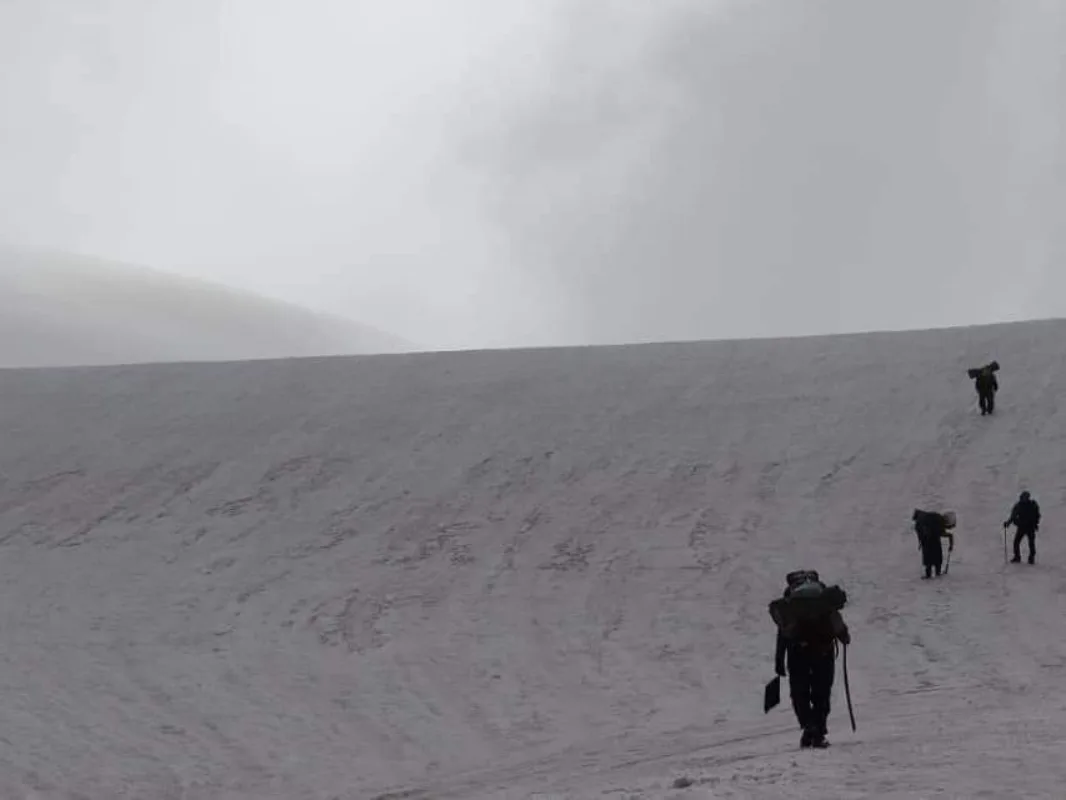
This is going to be the toughest part of our whole tour. We will have to start trekking early as the snow will be more firm in the morning. Today we will be reaching Spiti Valley through the Pin Parvati Pass. As we leave Parvati Valley and head towards Spiti you will be able to see a sudden change in the terrain. Before crossing the Parvati Valley we will have to walk on the glacier. Since there are hidden crevasses on the glac-ier we have to be cautious for another 3 km. After this tiring walk there is a steep ascent of 300 to 400 m. Af-ter this climb we will reach the pass at 17,000 ft. This is going be a great achievement. We will relax here for a while and then descend to the camp II. It is 1.5 km away from the pass and is a gradual descend. We will stay at the campsite.
Day 9 - Camp II To Mudh

We will head today for Wichkurung Thatch. It is a 3 km descend but one has to be careful while keeping the foot down. We will also be crossing a stream to reach Wichkurung Thatch. After the river crossing we will have a level walk and finally reach our campsite.
Day 10 - Mudh To Kaza

On day 11 we will drive from Mudh to Kaza. On our way we will Visit the Key Monastery and Kibber Vil-lage. Kibber is the second highest inhabited village in the world. After we are done with our sightseeing, we will head towards Kaza ( 4,079 m)
Day 11 - Kaza To Chandertal
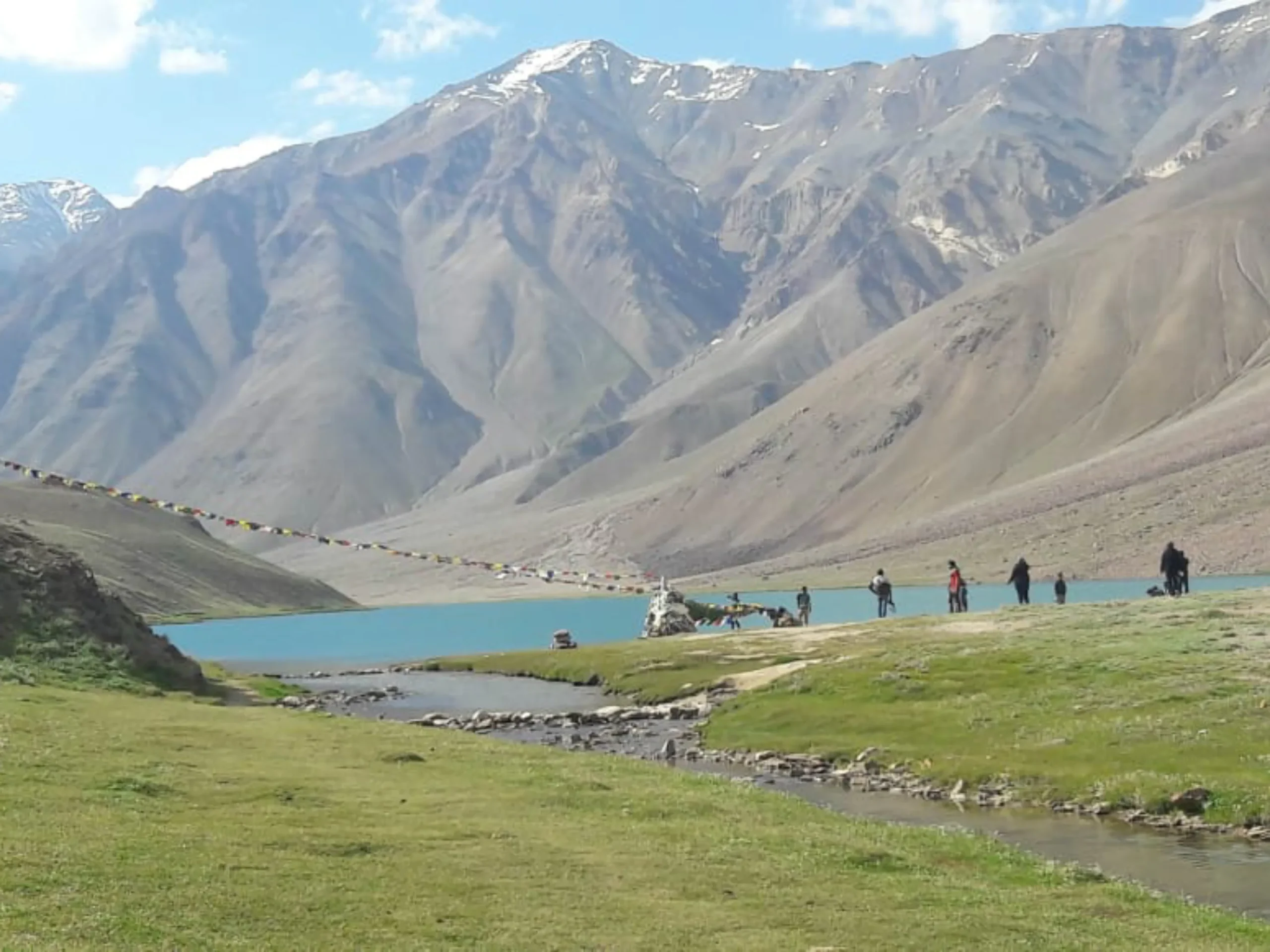
Today we drive from Kaza to Chandertal which is also known as the Moon Lake. It is situated at the eleva-tion of 4480 m. On our way, we will also be crossing Kunzungla (4253 m)
Day 12 - Chandertal To Manali

Drive from Chandertal to Manali. On the way, we cross Rohtangla (4953 m). We will be dropping you at Manali where our tour comes to an end.
What to pack for the trek ?
| Backpack with rain cover | (50 – 60 ltr) with comfortable shoulder straps |
| Day pack with rain cover | 20 – 30 litre (If off-load opted) |
| Walking stick | Advisable (At least one) |
| Small-size Water Bottle | 2 thermos flask bottles of one litre each, |
| Small size tiffin/lunch box | 1 Nos |
| Snacks | Energy bars, dry fruits, electoral/ORS |
| Personal Medical Kit | Consult your doctor |
| T-Shirt (Synthetic quick dry) | 1 Half sleeves |
| Fleece T-shirt | 1 Nos |
| Wind stopper / Fleece jacket | 1 Nos |
| Windproof Jacket | 1 Nos |
| Down feather / Hollow jacket | 1 Nos |
| Thermal inner (Upper and Lower) | 1 Pair |
| Trek Pant (Synthetic quick dry) | 1 Nos |
| Wind stopper / Fleece Pant | 1 Nos |
| Waterproof gloves | 1 Pair |
| Fleece / woollen gloves | 1 Pair |
| Poncho / waterproof Jacket and pant | 1 Nos |
| Head torch | 1 Nos. (Avoid Hand torch) |
| Sun Cap | Not required |
| Woolen Cap | 1 Nos. |
| Balaclava | 1 Nos |
| Buff | 1 Nos (Woollen) |
| Sunglasses | UV with dark side cover, People who wear spectacles – (A)- Use contact lenses | (B)- Photo chromatic glasses |
| Sunscreen | 1 Nos |
| Moisturiser | 1 Nos |
| Chapstick / Lip balm | 1 Nos |
| Toothbrush and toothpaste | 1 Nos |
| Toilet paper & Wipes | 1 Nos |
| Soap/hand sanitisers | 1 Nos |
| Antibacterial powder | 1 Nos |
| Quick dry towel | 1 Nos |
Points to Remember
- Accommodation: You will be provided tents on a twin-sharing basis including all the basic commodities; mattress- R Value 4, Sleeping bag, and Lamp.
- Meals: You will be provided nutritious meals during the trek to keep you energised and strengthened.
- Transportation: A transfer from the rendezvous to the defined destination will be provided during the trek. This is optional* also.
- Trekking gear: Basic trekking gear; trekking poles, micro-spikes, and gaiters will be provided for the snowy region.
- First Aid: A basic first aid kit will be there in case of a minor injury or illness.
- Personal Clothing: The clothing for the trek must be of your own.
- Meals during transit: When we are transferring you from one point to another, there will be no meals provided from our side.
- Personal Expenses: Any kind of personal expenses are not covered in the trek.
- Emergency Evacuation Cost: The cost for any emergency evacuation stands exclusive from the trek. The participant has to bear the expenses, although supporting staff will be there till you get better again.
Building Strength :
- Spare some time for a 2-3 km walk daily at least 20 days before the trek.
- You can add some breathing exercises to the routine as well.
- You can strengthen your cardiovascular system by cycling and jogging.
Mental Strength :
- Learn to maintain a positive attitude and understanding out in the mountains.
- Prepare yourself to adapt to any change depending on the weather and other uncontrollable situations.
- No intoxication: Any kind of mischievous activity like drinking, or smoking is not permitted on the trek. One who tries to go beyond the bottleneck limits will be sent back to the base camp.
- Indemnity form: It is important to tell about your complete willingness to join this trek by filling out and submitting an indemnity form that can be downloaded from the website.
- Leave no trace technique: We work on the motive of ” take memories and leave no trace.” Throwing any kind of plastic wrappers on the trails is strictly prohibited. If you find any you can pick that up also.
- Quick-drying clothes: Carry some quick-drying inner layers to stay comfortable while walking, specifically during the monsoon season.
- Rain gear: Keep a raincoat or rain jacket along with rain pants for unpredictable showers.
- Sunglasses and Sunscreen: It is a protective layer you need to protect your eyes from the harsh and bright light and strong UV rays of the sun in the mountains.
- Personal Toiletries: It is advisable to carry your limited toiletries to not be a part of environmental deterioration. Please avoid carrying wet wipes as they are non-biodegradable and can leave a ton of microplastic back on the trail
- Your body reacts very differently when you are out in the mountains, this is because of the changing altitude, wind chill factor and air pressure that can lead to a disturbance in your body during the trek, just to avoid that a little bit of hard work will pay you well.
- An open mind is the biggest quality you should keep when you are this far from your home. There can be lots of unexpected things you have to experience for the first time yet a smiling face and courageous personality will help you in every tricky situation
- Throwing any kind of plastic back on the trail will show your intellectual level only and taking it back with you is a step towards preserving what we have.
We will be visiting eco-sensitive areas while trekking, using some small practices can minimize the impact of our visit to these areas. Here are some important yet ignored facts that can help us to keep the environment intact:
Stick to Established Trails
- Stay on Trails: If we use the existing trails to walk on, it will not tamper with the local vegetation and keep the life of microorganisms in the area safe.
- Avoid Shortcuts: If we take shortcuts, it can destroy the plantation and disturb the ecology.
Minimize Campfire Impact
- Using a Stove: We will carry a portable camping stove instead of a campfire to cook food. We won’t light fire unnecessarily just to avoid the destruction of nature and let our bodies adjust to the temperature.
- Fire Regulations: If in any case fire has to be lit, we will use established fire rings to keep the fires small. We will ensure they are completely extinguished before leaving.
Dispose of Waste Properly
- Leave no trace: We will Carry all the trash out with us, including food scraps and packaging. If you find any kind of wrapper or trash on the trail, you can pick it up and hand it to us at the campsite to get it disposed of properly.
- Human Waste: You can use restroom facilities where available. In remote areas, dig a cat hole (6-8 inches deep, at least 200 feet from water sources, trails, and campsites) and cover it properly after use. Using wet wipes is harmful thing for the environment, you can Consider using biodegradable toilet paper.
Respect Wildlife
- Keep a Distance: We can Observe the animals from a distance to avoid disturbing them, chasing them will not be considered as the right thing to do.
- Do Not Feed Animals: Feeding wildlife can disrupt their natural behaviours and diet.
Leave What You Find; Enjoy the things from where they are
- Take Only Memories: Do not take the rocks, pluck plants, and pick other natural objects as you find them to preserve the environment.
- Avoid Disturbing Historical and Cultural Sites: Respect any cultural or historical artefacts you encounter.
Reduce Use of Pollutants
- Eco-friendly Products: You can use biodegradable soap and avoid contaminating water sources.
- Minimize Noise Pollution: Keep noise levels low to avoid disturbing wildlife and other trekkers.
Travel in Small Groups
- Limit Group Size: Trekking is a smaller group that has less impact on the environment.
Educate Yourself and Others
- Learn and Share: Educate yourself about Leave No Trace principles and share this knowledge with fellow trekkers.
Support Conservation Efforts
- Contribute to Local Conservation: You can support organizations and initiatives that are working towards preserving natural areas.
Upcoming Tours
This can be your next getaway for your upcoming vacations
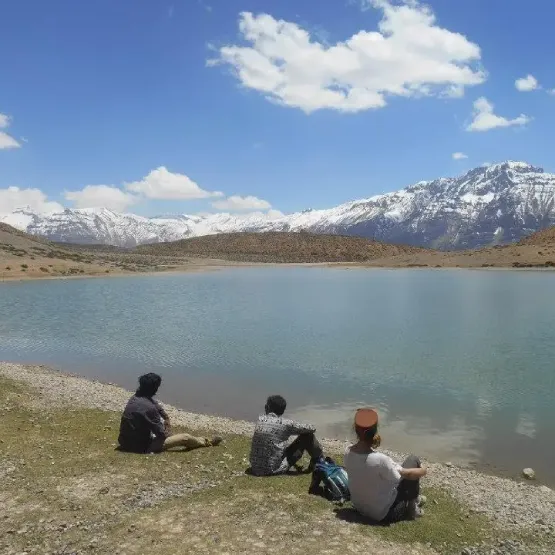
SPITI VALLEY ROAD TRIP
A thrilling journey to the Land of Lamas offering scenic views of the Himalayas, Buddhist culture and architecture .
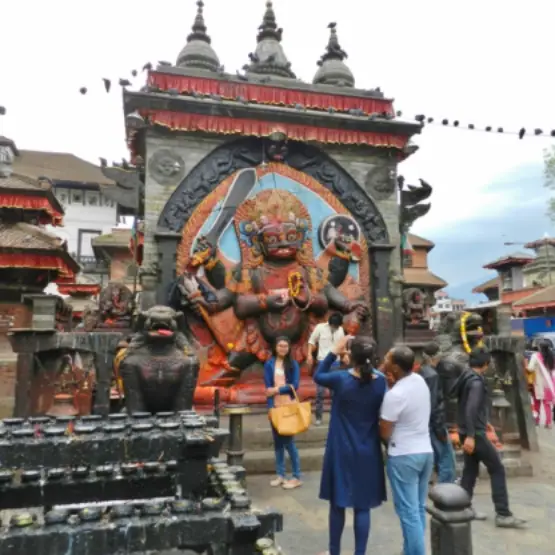
NEPAL ROAD TRIP
A country on the southern slopes of the Great Himalayan ranges offering you culture, tradition and scenic views.
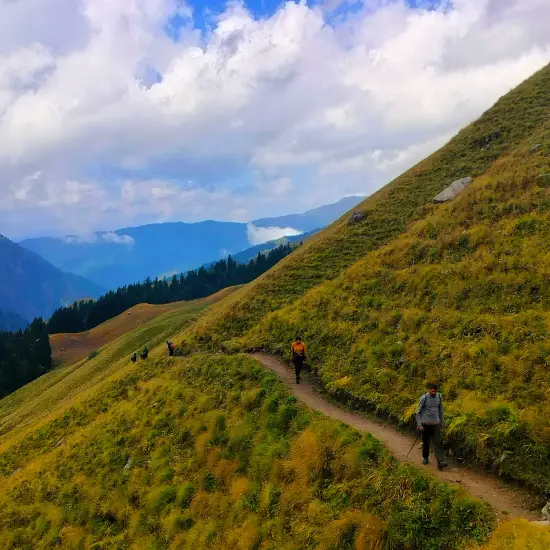
CHANDARNAHAN LAKES TREK
A trek in the outskirts of Shimla taking you closer to the nature and inner realms of Shimla.
Call us for a free quote
We are here to plan your upcoming adventure, give us a call today!
For travel related queries
Info@highinhimalayas.com
Phone
+91 78765 96443
+91 97360 82255
Address
Cabin No. 501, PC Chambers, Near Jodha Niwas Parking, The Mall Road, Shimla, Himachal Pradesh 171001
